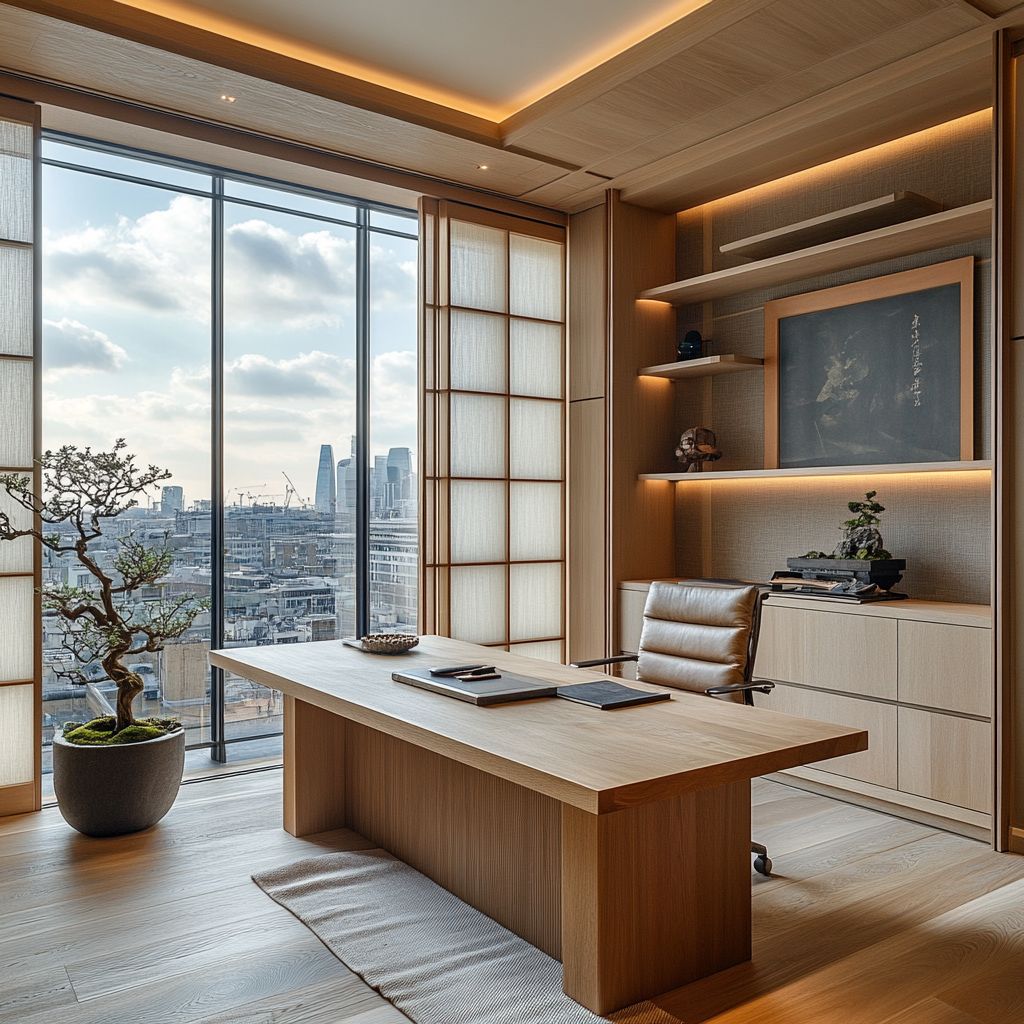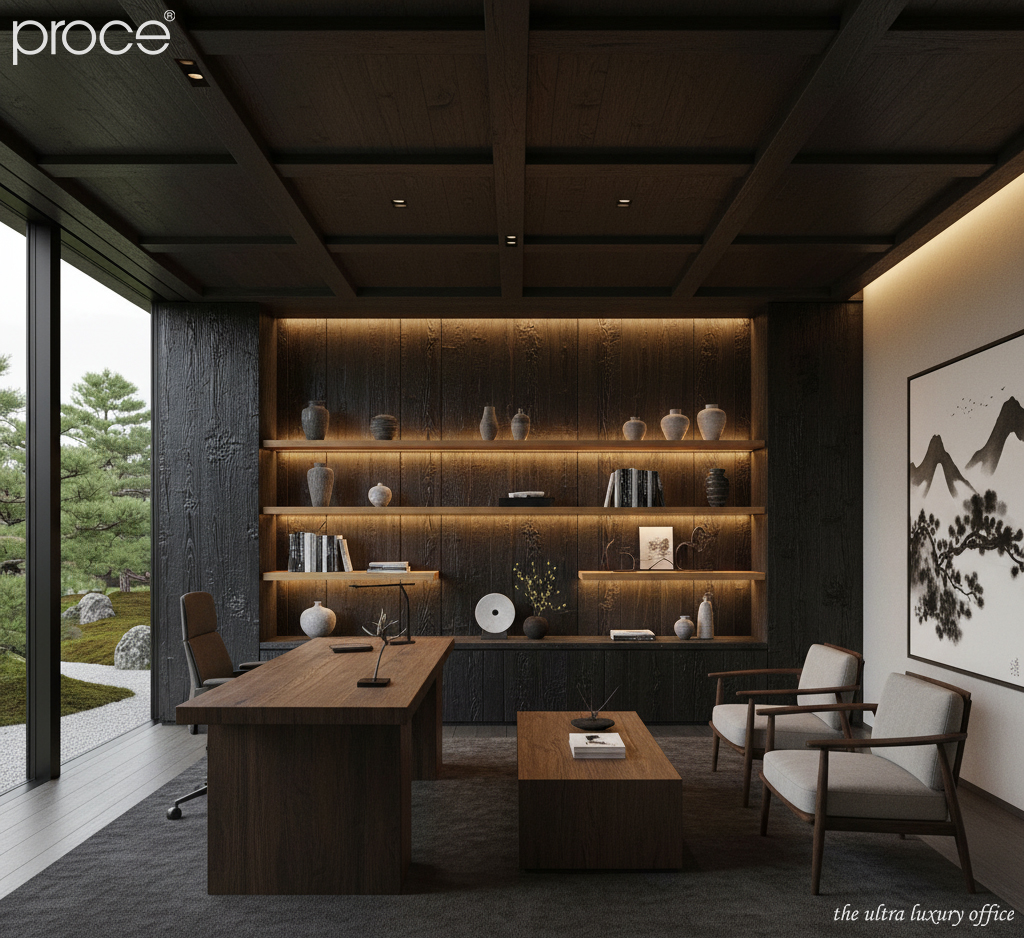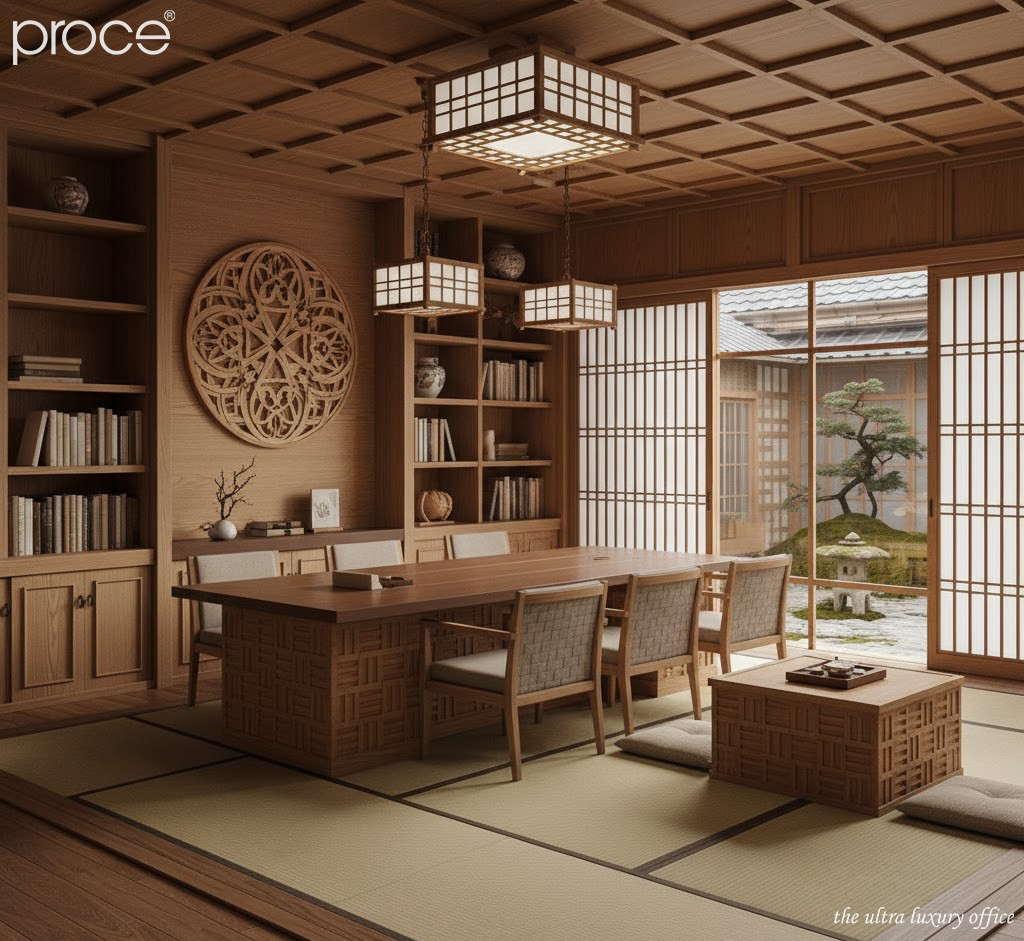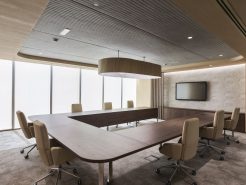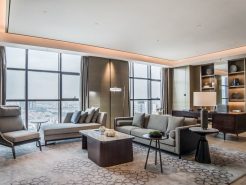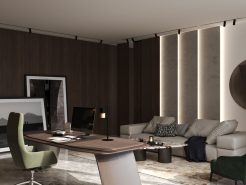When building the new headquarters, the Japanese corporation’s chairman did not choose flashy Italian furniture. Nor did he use modern metal. He called a veteran carpenter from Kyoto, just to create a unique space. That is the chairman office. No screws, no glue, just traditional wooden joints. Locked together with absolute precision and a century-old craftsmanship. Because for him, a leader’s workplace not only needs luxury. But also depth, philosophy and the silence of wood. So, can those silent wooden joints become a new manifesto for leaders – presidents who value depth and identity? Let’s find the answer through the article below!
1. Kumiki – From woodworking technique to a thousand-year-old cultural symbol of Japan
Few people expect that behind the hundreds of years old wooden structures that still stand firm against natural disasters and time in Japan. There is a seemingly simple technique: Kumiki – the art of joining wood joints without using nails, glue or any adhesive. But Kumiki is not just a carpentry technique. It is also the crystallization of architectural thinking, philosophy of life. And the profound harmony between humans and nature in Japanese culture.
Kumiki literally means “assembled pieces of wood”. However, to join a standard Japanese joint, the craftsman must understand the characteristics of each type of wood, calculate the humidity, grain direction and expansion over time. The joints not only have a mechanical function but also have high aesthetic value. Every cut, every hidden pin shows the skill and attitude of the maker.
The Origin of Traditional Japanese Wood Mortise
The origin of this technique can be traced back to the Asuka period (6th-7th century). When wooden architecture was introduced to Japan from China. However, the Japanese not only adopted it but also improved and developed it into a rich mortise and tenon system. It reached its peak of sophistication during the Edo period (1603-1868). At that time, temples, shrines and mansions all used wooden mortise and tenon. Not because of a lack of modern materials, but because they believed that only structures that were in harmony with nature could last.
Today, Kumiki is not only a mark of ancient architecture. It is also considered a design language that carries the Japanese identity. A testament to how tradition can live proudly in the modern age. (Top 5 reasons why the president’s office hinges have to bear heavy loads).
2. Outstanding technical features – The pinnacle of precision in chairman office design
Once upon a time, in a carpentry workshop deep in the snow-capped mountains of Japan, there was an old craftsman whose hands trembled, but whose eyes still shone with pride. He didn’t use any nails, nor did he need a drop of glue. All he needed was time, patience, and absolute precision.
Every time he creates a mortise and tenon joint, he slows down his breathing, examining each piece of wood with his eyes and hands, as if he were conversing with them. The wood he uses is not random. It is Hinoki pine and Sugi cedar. Carefully selected, only taken from trees of sufficient age, naturally dried through many seasons of rain and sun. Not a single crack, not a single defect. Because only that type of wood “joins” well, hugging each other tightly as if born to be joined.
The joints he creates are like hidden “mechanical locks”. They can be sliding, rotating, or hidden pins. They seem fragile but are incredibly strong. If there is only a 0.1mm deviation, the whole structure can collapse. Yet in his entire life, he has never let that happen. Because for him, carpentry is not just a profession, but an art of precision and respect for natural materials. (President’s room design – Handmade wooden joints, different class).
3. Are traditional Japanese wooden mortises suitable for the chairman office?
Aesthetically – Hidden beauty, like a calm leader
Not all beauty needs to be displayed. There is beauty only for those patient enough to feel, delicate enough to understand. Traditional Japanese wooden dream is such a beauty. Quiet, discreet, but profound to the end.
Step into an interior space with exquisite mortise and tenon joints. One does not see nails, glue, or any tension. Instead, there is a feeling of harmony and strange peace. As if each object has been there for a long time, born to belong to each other. Each joint is a lesson in steadfastness and precision. Each wood grain is a stroke of nature. All blend together to create a very unique aesthetic language. No need for explanation, just feel it with your heart.
That beauty is very close to the demeanor of a brave president. No need to raise your voice, but everyone must listen. No need to be flashy, but always be the center. That is the beauty of serenity, of a leader who has gone through many storms and chooses to be present with depth, not with noise.
On materials and durability – Bonded by time, not just materials
There is a story told in old Japanese carpentry workshops: “If you build a house with Hinoki wood of the right age and with the right technique, then three generations later, your children and grandchildren will still be able to sit in it and smell the fragrance of the wood.”
That story is not an exaggeration. When natural wood like Hinoki pine or Sugi cedar is treated properly, dried naturally, not steamed, not pressed artificially, it possesses an amazingly durable vitality. And when combined with the technique of wood joints, no nails, no glue, just precise bonding. They create a unified block that is not easy to break, even after hundreds of years.
The interior of the president’s office should not only be beautiful when it is first installed. It needs to be as long-lasting as the leader’s long-term vision. Not broken, not loose over time. But more and more mature and solid. That is why furniture using traditional wooden joints is so suitable. They are not just items, but a commitment to sustainability, longevity and inheritance.
On symbolic value – The philosophy hidden behind each wooden joint
An old carpenter once said: “I am not just making wooden joints, I am telling the story of my ancestors.” And indeed, every joint, every piece of wood put together by hand. All carry the depth of Eastern culture. Where people live in harmony with nature, respect order and value humility over appearance.
In a world where everything can be mass produced, the technique of woodworking is the opposite, slow, meticulous, requiring perseverance. It is not just a technique, but a philosophy. A philosophy very close to the image of an ideal leader. No need for noise, no need for flashiness, but every action is sure, steady and calculated.
When placed in the president’s office, the interior using wooden joints is not only a choice of aesthetics or durability. It is a declaration of leadership style: brave but profound, strong but not needing to show off. It shows attachment to tradition, respect for the past. And a profound vision – something that not every leader has.
On Personalization – No Two Are Like You
You can easily find a beautiful chair, a luxurious table in any showroom. But a table and chair set created just for you. With each mortise and tenon joint calculated based on space, light and the owner’s personality. That is a completely different class.
The wooden mortise and tenon allows for that. Because no two mortise and tenon joints are exactly the same. Every detail is calculated, hand-drawn, cut and tested by hand. It is like a tailor-made suit, fitting well, expressing personality but still maintaining standards. For the president’s office, a place not only for working, but also for receiving guests and making important decisions. That personalization is necessary. It creates a space that reflects the leader’s identity, aesthetic taste and vision.
No one wants to sit in a room that is a “copy” of another place. A president’s room should be unique and wooden joints are the way to create that uniqueness. While still keeping the Asian spirit: discreet, profound and unobtrusive. (Design and construction budget for the president’s office according to function).
Conclude
When the wooden bars are joined together using traditional mortise and tenon techniques. It is not simply a connection of materials, but also a blend of spirit and intelligence. Each joint requires meticulousness, precision to the millimeter. Demonstrating the patience and dedication of the craftsman. The president’s office – where important decisions are made. Always needs a space that breathes sustainability and sophistication like that. There, wood is both a material and a story of time, symbolizing the steadfastness and depth in each decision. Therefore, Kumiki is not just an ancient art. But can completely become the soul of the modern president’s office. Where every detail shines the value and vision of the leader.
=====\
PROCE – TOTAL LUXURY OFFICE SOLUTION
Website: https://proce.vn/
Youtube: https://www.youtube.com/@noithatvanphonghangsang
Fanpage: https://www.facebook.com/vanphongnhapkhauProce
GG Business: https://business.google.com/dashboard/l/15115233216900975876
Linkedin: https://www.linkedin.com/company/74359718/admin/
Hotline: 090.115.6767
#phong_chu_tich; #phong_lam_viec_chu_tich; #phong_chu_tich_chuan_sang
#phong_chu_tich_dang_cap; #noi_that_phong_chu_tich
#thiet_ke_phong_chu_tich


